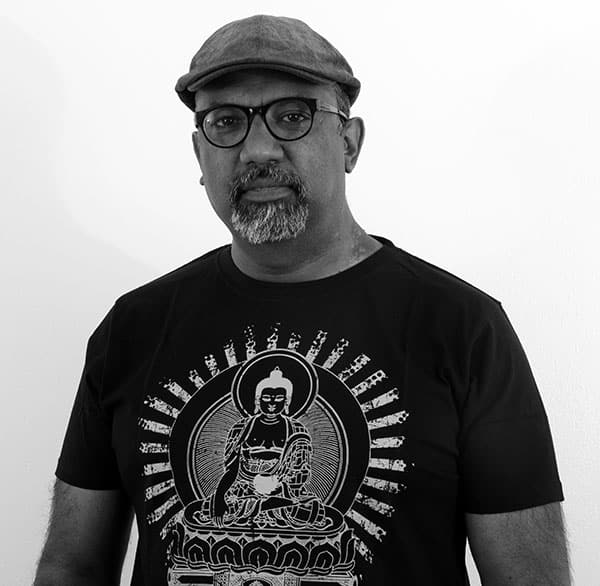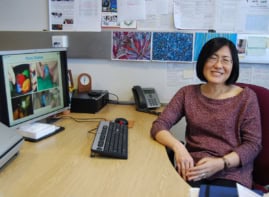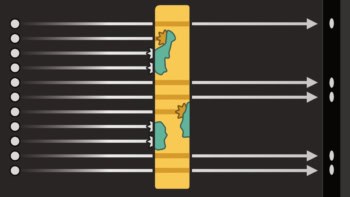Anand Kamalakar is a Brooklyn-based documentary film director, producer and editor. His work includes The Gowanus Canal, Chief Engineer Conrad, Citizen Sharma, Building Bridges, 300 Miles to Freedom, Garwin, Holy (un)Holy River and Salam – The First ****** Nobel Laureate (Best Film, Raw Science Film Festival).

What sparked your initial interest in physics?
Growing up as a teenager in Hyderabad, India, my family had an annual subscription to National Geographic magazine. I would be engrossed for hours – any article about space and astronomy would immediately grab my attention. The beautiful images of a rising space shuttle at Cape Canaveral, or the first Hubble images of deep space, are still etched in my mind. When I graduated from high school, as is the norm in India, friends in my peer group were frantically studying for the myriad entrance exams to get into engineering or medical schools. I could not escape that pressure. I always wanted to be an architect. When that did not work out, as I did not clear the entrance test, I opted for the next best thing: a three-year BSc in maths, physics and chemistry at Nizam College, Osmania University.
What did your physics focus on, and did you ever consider a permanent academic career?
Though my primary interest was in the field of astronomy and astrophysics, due to the way the curriculum is structured in India, I did not have the option of choosing it as a major. My only option was to specialize in this field at master’s level. But when that time arrived, my interests had taken a different turn. I had never entertained the idea of a permanent academic career in science – though I am currently an adjunct professor at Brooklyn College, which is part of the City University of New York.
How did your interest in the arts, and film especially, emerge?
As a teenager my father exposed me to works by filmmakers such as John Ford, Orson Welles, Akira Kurosawa and Satyajit Ray, when most of my friends were watching mainstream Bollywood cinema. When I completed my BSc, I was still uncertain which career path to choose. A chance visit to the media department at the University of Hyderabad alleviated that ambiguity. Shiny new cameras, monitors and recording studios all spoke to me with such clarity that I knew I had to get my hands on them. Three graduate degrees later, I arrived in New York City to start my professional career in film.
What was it like working on your recent film, Salam – The First ****** Nobel Laureate?
In 2014 I directed a documentary on the life of renowned American physicist Richard Garwin (www.garwinthemovie.com). Earlier in my career I had edited a three-hour-long PBS series called Mysteries of Deep Space, when my love for astronomy and astrophysics and film had come together. When the producers of Salam, Zakir Thaver and Omar Vandal, approached me with the offer to edit and direct this film, they knew my experience in making films about science, as well as my Indian heritage, would be a good fit. Resurrecting the remarkable life of Abdus Salam in all its complexity for the screen, for generations to come, was deeply gratifying. Omar and Zakir had invested more than a decade accumulating exhaustive archival material on Salam. My two-year contribution was a journey of discovery and learning, which still has not ended. It has been my most satisfying and illuminating experience so far, not only because the story was so close to home, but also because it gave me the opportunity to learn about particle physics and other fascinating scientific concepts I otherwise would not have.
What are you working on now?
A feature-length documentary tentatively titled In Search of Bengali Harlem, which explores the arrival of South Asians in New York City on colonial British steam ships in the late 1800s and early 1900s. A rare piece of New York history is being revealed in this film. I am also in the midst of developing a project about Cuban music, to coincide with the 60th anniversary of the Cuban Revolution next year.
How has your physics background been helpful in your work, if at all?
This, together with an innate interest in science, has always informed the way I see the world. Physics is in everything we do, including filmmaking. While filmmaking is storytelling at its core, there is a mechanical and electronic aspect to it, which is constantly evolving. As I always say to my students, filmmaking is both an art and a craft. The craft aspect of filmmaking has a lot to do with physics, and science in general.
Any advice for today’s students?
Always search for your inner voice. When you find it, pursue it with passion. There is nothing more gratifying than having your passion be your life’s work. The road is never easy. Sometimes the monetary reward is not there or is hard to come by. But do not give up hope as, in the long run, it is always more satisfying to look back and know that you followed your inner calling.



